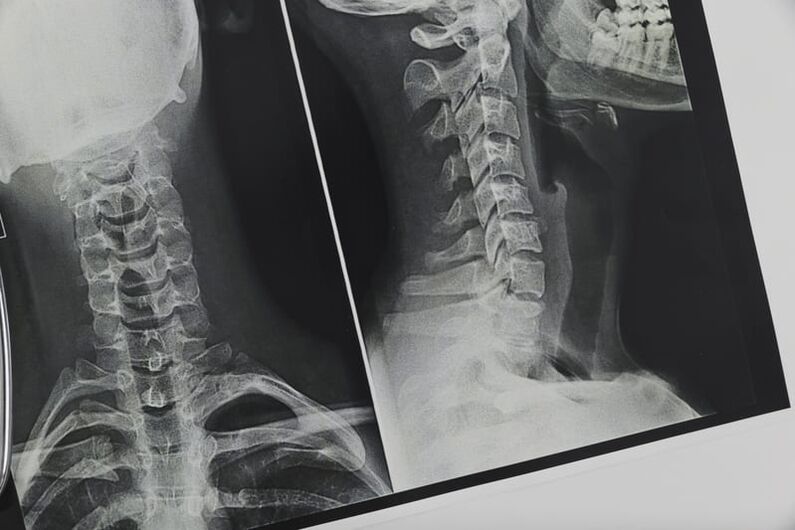
A sedentary lifestyle is the key to the development of many diseases associated with musculoskeletal dysfunction. The most common disease is cervical osteochondrosis, which affects the intervertebral discs. The disease occurs suddenly and develops over a long period of time. Untimely treatment leads to a significant reduction in the quality of health.
Typical symptoms of cervical osteochondrosis:
- Headache in the back of the head;
- dizziness;
- pain in the arms, shoulders, back;
- Cracking in the neck;
- Harmony of limbs;
- Deterioration of vision;
- Appearance of fatigue, muscle tension at the slightest physical force;
- Light header;
- Movement coordination is impaired.
Very small symptoms can turn into an irreversible pathology of the spine. Therefore, in the case of the above symptoms, it is necessary to look for ways to prevent the development of the disease.

Causes and consequences of cervical osteochondrosis
The appearance of the disease occurs under the influence of the following factors:
- Sedentary (sitting, office) lifestyle;
- Malnutrition (calcium, magnesium deficiency);
- heredity;
- Hypothermia, mechanical damage to the neck;
- Lift weights;
- Excess weight;
- Drink alcohol.
If you do not take preventive measures and do not treat, but take painkillers, then the complete destruction of thin bones can occur. Also, the development of the disease leads to changes in the position of the vertebrae, constriction of blood vessels. As a result, the blood begins to circulate worse, the normal functioning of the cardiovascular system is disrupted, and brain function deteriorates. In addition, patients often complain of migraines, decreased visual acuity, hypertension, or hypotension. The most dangerous result is the following:
- Intervertebral hernia;
- Spinal stroke;
- Vestibular root syndrome;
- Compression of the vertebral artery.
Only timely treatment will stop the progressive development of the disease.

How to treat cervical osteochondrosis at home
Even after contacting qualified specialists, the patient receives a list of recommendations for self-treatment. Applying only one ointment, mixture, cream, it is possible to achieve positive results by regularly performing a number of procedures involving anesthesia. An important result in the prevention of cervical osteochondrosis is achieved through self-massage and gymnastic exercises.
Rub the affected area to relieve pain, normalize blood circulation and eliminate inflammation. Rubbing recipes:
- A mixture of vodka with horseradish, the root of a plant, crushed in a blender and mixed in equal proportions with a liquid substance. The infusion is rubbed overnight for 14 days.
- A combination of olive oil, plantain and sage, 2 tablespoons herbs pour a greasy substance (50 ml) and petroleum jelly (40 ml). The drug is rubbed into the neck three times a day.
- Boiled potatoes are finely chopped and mixed with honey, after the mixture cools down a bit, the affected area should be pulled out and wrapped in a film and towel.
You need to take tinctures and decoctions to restore and enrich the body with vitamins. The use of cinquefoil is considered effective. Plant 30 q. dry, pour boiling water (0, 5 liters) and infuse for 3 weeks. The remedy is taken 1 tablespoon 3 times a day. l.
An equally popular recipe is a decoction of parsley root, crushed and poured with boiling water for every 100 grams. roots need 1 liter of water. The composition is boiled for 1, 5 hours, then take 1 tbsp. l. three times a day. The course lasts 3 weeks.

Cervical osteochondrosis can be treated with self-massage
Regular physical exposure to the painful area helps to stop the disease. Massage does not take much time, however, requires a careful approach, the study of hotspots. Therefore, it is necessary to find areas that cannot be affected before proceeding with the process.
Self-massage procedure:
- take a sitting position;
- Complete relaxation of the body;
- Fingers are applied to the neck and light strokes are performed from top to bottom for 2 minutes;
- The exercise is repeated, only with great diligence with the thumbs;
- The lateral surface of the cervical spine is rubbed in a circular motion;
- Kneading muscles in turn and pinch;
- Rub after finishing.
The session should last 8-10 minutes.
Therapeutic exercises along with massage are considered effective. Exercise should be smooth and not tiring. Attention should be paid to the cervical spine, dizziness, neck extension, shoulder movement.

















































